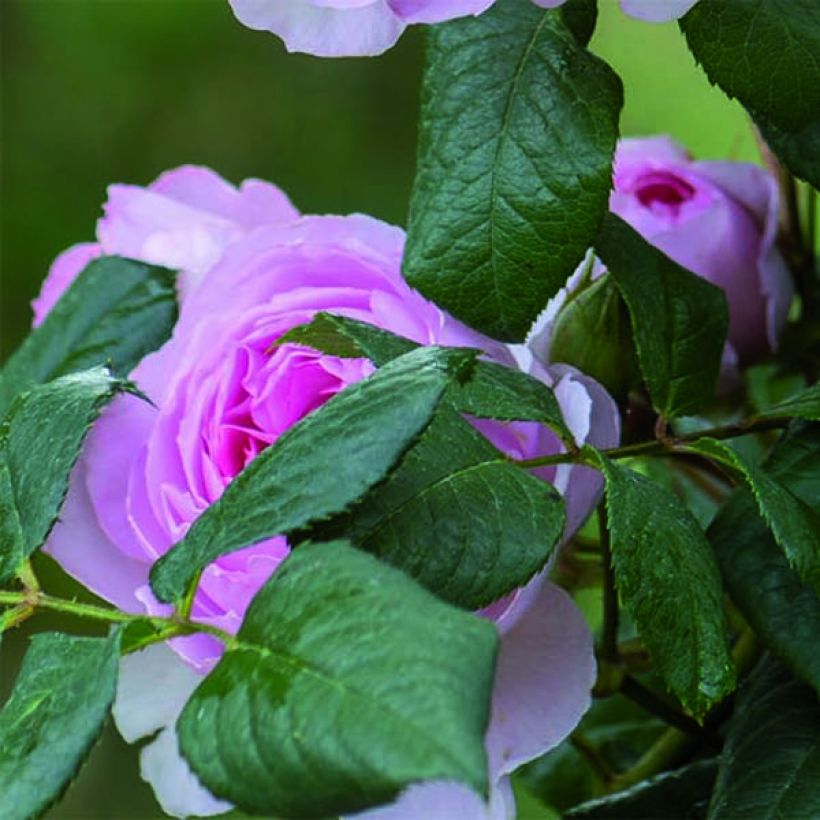

Rosa The Ancient Mariner - English Rose
Rosa The Ancient Mariner - English Rose
Rosa The Ancient Mariner® 'Ausoutcry'
Rose
This item cannot be shipped to the selected country
Delivery charge from €5.90
Delivery charge from €5.90
Delivery to Corse prohibited
More information
Schedule delivery date,
and select date in basket
This plant carries a 24 months recovery warranty
More information
We guarantee the quality of our plants for a full growing cycle, and will replace at our expense any plant that fails to recover under normal climatic and planting conditions.
From €5.90 for pickup delivery and €6.90 for home delivery
Express home delivery from €8.90.
From €5.90 for pickup delivery and €6.90 for home delivery
Express home delivery from €8.90.
Delivery to Corse prohibited: UE law prohibits the import of this plant from mainland France to Corse as part of the fight against Xylella fastidiosa. Please accept our sincere apologies.
More information

Does this plant fit my garden?
Set up your Plantfit profile →
Description
The English rose The Ancient Mariner® is one of David Austin's latest creations. Like the varieties William Morris®, Geoff Hamilton® and A Shropshire Lad®, it is a large, vigorous rose with an imposing habit, which can create a beautiful backdrop in the garden. The romance of its flowering is matched only by its generosity. It produces large, double, incurved flowers from summer to autumn, in a superb shade of pink at every stage of flowering. From a deep candy pink at the centre of the corollas, they gently fade to a soft pink on the edges, exhaling a powerful fragrance of old-fashioned rose.
This rose, kept in check by pruning, is a large bush reaching 1.5m (4ft 11in) in height and 1m (3ft 4in) in width. Its growth is rapid and vigorous, as is often the case with roses from the Leander group, and its thornless stems are covered with foliage that is not very susceptible to diseases. On this large, well-flowering bush, bright pink buds are juxtaposed with rosette-shaped flowers that are slightly incurved and 9cm (3.5in) wide. They are of a pure and very fresh pink, more intense in the centre, and opalescent pink towards the outer edges. They exhale a delightful fragrance, reminiscent of myrrh.
Of exemplary vigour, even in rocky soils if they are sufficiently deep, the rose The Ancient Mariner® 'Ausoutcry' forms a large bush that will be magnificent as a backdrop, at the back of flower beds or at the foot of evergreen trees such as holly, boxwood or Portuguese laurel. It can also be mixed with flowering shrubs (buddleias, lilacs, Spireas, Deutzias, mock oranges, Kolkwitzias), in the background of the garden. In mixed borders, it will accompany perennial plants, to which it will bring exuberance and fragrance, as well as delicate annuals and even grasses, whose tufted foliage will hide its sometimes bare base. It can easily be trained to climb on a small arch, a pergola, over an entrance or gate, in the company of a clematis, for example.
Obtained by David Austin in 2015. English rose, Leander group.
Its name comes from an epic poem written by the British author Samuel Taylor Coleridge ('The Rime of the Ancient Mariner') published in 1798 in a collection entitled Lyrical Ballads. (Source David Austin).
Report an error about the product description
Rosa The Ancient Mariner - English Rose in pictures




Plant habit
Flowering
Foliage
Botanical data
Rosa
The Ancient Mariner® 'Ausoutcry'
Rosaceae
Rose
Cultivar or hybrid
Rosa canina Laxa (4L/5L pot, Wrapped bare root)
Other Roses A to Z
Planting and care
Plant your English Rose The Ancient Mariner® in a sunny or lightly shaded location. English roses are tolerant but do not like excessive limestone. They will adapt to any garden as long as the soil is well worked, deep, and rich enough. To install your rose, work the soil by crumbling it and put an amendment at the bottom of the planting hole, such as dried blood or dehydrated horn. Water generously after planting to remove air pockets. Water regularly for a few weeks to facilitate rooting.
Roses are often stained or unsightly at the end of summer, but this is not a problem for their development. These stains are not harmful to the rose, it is a natural phenomenon.
Planting period
Intended location
Care
-
, onOrder confirmed
Reply from on Promesse de fleurs
Fragrant Roses
Haven't found what you were looking for?
Hardiness is the lowest winter temperature a plant can endure without suffering serious damage or even dying. However, hardiness is affected by location (a sheltered area, such as a patio), protection (winter cover) and soil type (hardiness is improved by well-drained soil).

Photo Sharing Terms & Conditions
In order to encourage gardeners to interact and share their experiences, Promesse de fleurs offers various media enabling content to be uploaded onto its Site - in particular via the ‘Photo sharing’ module.
The User agrees to refrain from:
- Posting any content that is illegal, prejudicial, insulting, racist, inciteful to hatred, revisionist, contrary to public decency, that infringes on privacy or on the privacy rights of third parties, in particular the publicity rights of persons and goods, intellectual property rights, or the right to privacy.
- Submitting content on behalf of a third party;
- Impersonate the identity of a third party and/or publish any personal information about a third party;
In general, the User undertakes to refrain from any unethical behaviour.
All Content (in particular text, comments, files, images, photos, videos, creative works, etc.), which may be subject to property or intellectual property rights, image or other private rights, shall remain the property of the User, subject to the limited rights granted by the terms of the licence granted by Promesse de fleurs as stated below. Users are at liberty to publish or not to publish such Content on the Site, notably via the ‘Photo Sharing’ facility, and accept that this Content shall be made public and freely accessible, notably on the Internet.
Users further acknowledge, undertake to have ,and guarantee that they hold all necessary rights and permissions to publish such material on the Site, in particular with regard to the legislation in force pertaining to any privacy, property, intellectual property, image, or contractual rights, or rights of any other nature. By publishing such Content on the Site, Users acknowledge accepting full liability as publishers of the Content within the meaning of the law, and grant Promesse de fleurs, free of charge, an inclusive, worldwide licence for the said Content for the entire duration of its publication, including all reproduction, representation, up/downloading, displaying, performing, transmission, and storage rights.
Users also grant permission for their name to be linked to the Content and accept that this link may not always be made available.
By engaging in posting material, Users consent to their Content becoming automatically accessible on the Internet, in particular on other sites and/or blogs and/or web pages of the Promesse de fleurs site, including in particular social pages and the Promesse de fleurs catalogue.
Users may secure the removal of entrusted content free of charge by issuing a simple request via our contact form.
The flowering period indicated on our website applies to countries and regions located in USDA zone 8 (France, the United Kingdom, Ireland, the Netherlands, etc.)
It will vary according to where you live:
- In zones 9 to 10 (Italy, Spain, Greece, etc.), flowering will occur about 2 to 4 weeks earlier.
- In zones 6 to 7 (Germany, Poland, Slovenia, and lower mountainous regions), flowering will be delayed by 2 to 3 weeks.
- In zone 5 (Central Europe, Scandinavia), blooming will be delayed by 3 to 5 weeks.
In temperate climates, pruning of spring-flowering shrubs (forsythia, spireas, etc.) should be done just after flowering.
Pruning of summer-flowering shrubs (Indian Lilac, Perovskia, etc.) can be done in winter or spring.
In cold regions as well as with frost-sensitive plants, avoid pruning too early when severe frosts may still occur.
The planting period indicated on our website applies to countries and regions located in USDA zone 8 (France, United Kingdom, Ireland, Netherlands).
It will vary according to where you live:
- In Mediterranean zones (Marseille, Madrid, Milan, etc.), autumn and winter are the best planting periods.
- In continental zones (Strasbourg, Munich, Vienna, etc.), delay planting by 2 to 3 weeks in spring and bring it forward by 2 to 4 weeks in autumn.
- In mountainous regions (the Alps, Pyrenees, Carpathians, etc.), it is best to plant in late spring (May-June) or late summer (August-September).
The harvesting period indicated on our website applies to countries and regions in USDA zone 8 (France, England, Ireland, the Netherlands).
In colder areas (Scandinavia, Poland, Austria...) fruit and vegetable harvests are likely to be delayed by 3-4 weeks.
In warmer areas (Italy, Spain, Greece, etc.), harvesting will probably take place earlier, depending on weather conditions.
The sowing periods indicated on our website apply to countries and regions within USDA Zone 8 (France, UK, Ireland, Netherlands).
In colder areas (Scandinavia, Poland, Austria...), delay any outdoor sowing by 3-4 weeks, or sow under glass.
In warmer climes (Italy, Spain, Greece, etc.), bring outdoor sowing forward by a few weeks.














































